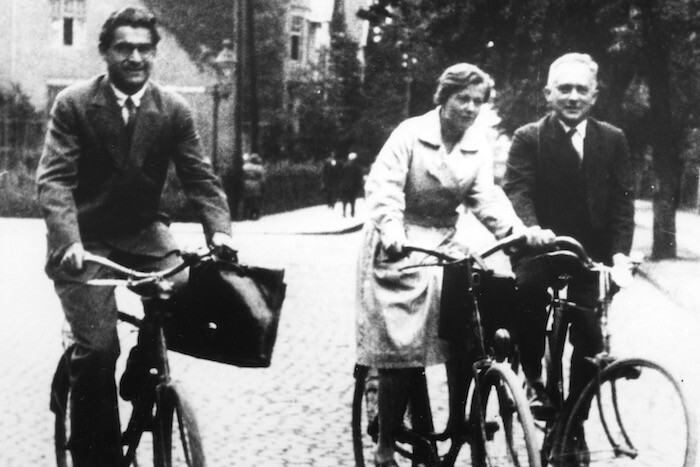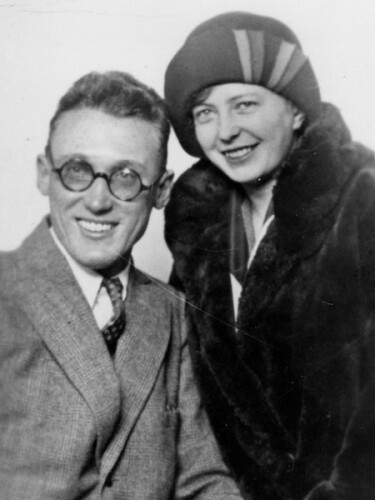The second woman to win the physics Nobel
This week, Donna Strickland became just the third woman to be awarded a Nobel Prize in Physics

From left: Victor Weisskopf, Maria Goeppert Mayer, and Max Born riding bikes.
AIP Emilio Segrè Visual Archives, Physics Today Collection, Gift of Jost Lemmerich
Maria Goeppert was born in 1906 in Kattowitz, Prussia. Her father, a professor of pediatrics, encouraged his talented daughter’s interest in mathematics and physics, and in 1930 Goeppert earned a PhD from the University of Göttingen in Germany. Legendary physicist Max Born supervised her doctoral dissertation on photon absorption in atoms.

Joseph Mayer and Maria Goeppert Mayer in the mid 1930s.
AIP Emilio Segrè Visual Archives, Gift of Maria Stein, Maria Stein Collection
That same year, Goeppert married Joseph Mayer, an American chemist who was at Göttingen on a Rockefeller Foundation fellowship. She moved with her new husband to Baltimore, Maryland, where he had accepted a job as a professor at Johns Hopkins University. Goeppert Mayer was not offered a permanent appointment at Hopkins—the university had strict anti-nepotism rules. She was, however, permitted to teach graduate students in the physics department and to continue her theoretical work on quantum mechanics in a physics department office, her former student Robert Sachs wrote in a 1982 article for Physics Today
Joseph Mayer lost his position at Hopkins in 1939 following clashes with administrators. According to biographer Joan Dash, Goeppert Mayer suspected that her presence in the physics department had been partly to blame for her husband’s difficulties; some of those Hopkins administrators had openly expressed disapproval of women scientists. Goeppert Mayer followed her husband to new positions at Columbia University and the University of Chicago. She also contributed to the Manhattan Project groups at Columbia and Los Alamos in the mid 1940s. After the war, she cobbled together a string of temporary appointments, often going entire academic years without a paying post. Her title at the University of Chicago was “voluntary associate professor"—in other words, she was not paid.

From left: Robert Atkinson, Enrico Fermi, and Maria Goeppert Mayer converse in Ann Arbor, Michigan.
AIP Emilio Segrè Visual Archives, Goudsmit Collection
Fortunately, as a theoretical physicist, Goeppert Mayer’s lack of laboratory space did not prevent her from continuing her work. Just after World War II ended, she began studying nuclear structures. As physicist Karen Johnson explained in a 1986 Physics Today feature

A portrait of Maria Goeppert Mayer, circa 1950.
Louise Barker, courtesy of AIP Emilio Segrè Visual Archives
However, as Johnson details, physicists were unsure of the reason why those numbers in particular were most stable. A conversation between Goeppert Mayer and her Chicago colleague Enrico Fermi led her to a crucial insight: Spin–orbit coupling was responsible. In back-to-back
In 1960, Goeppert Mayer and her husband were recruited to the University of California, San Diego, where they were both appointed full professors—her first permanent, paid scientific post since earning her doctorate 30 years earlier.
Three years later, Goeppert Mayer shared the 1963 Nobel Prize in Physics with Hans Jensen and Eugene Wigner for work on nuclear shell structures. In his 1972 obituary